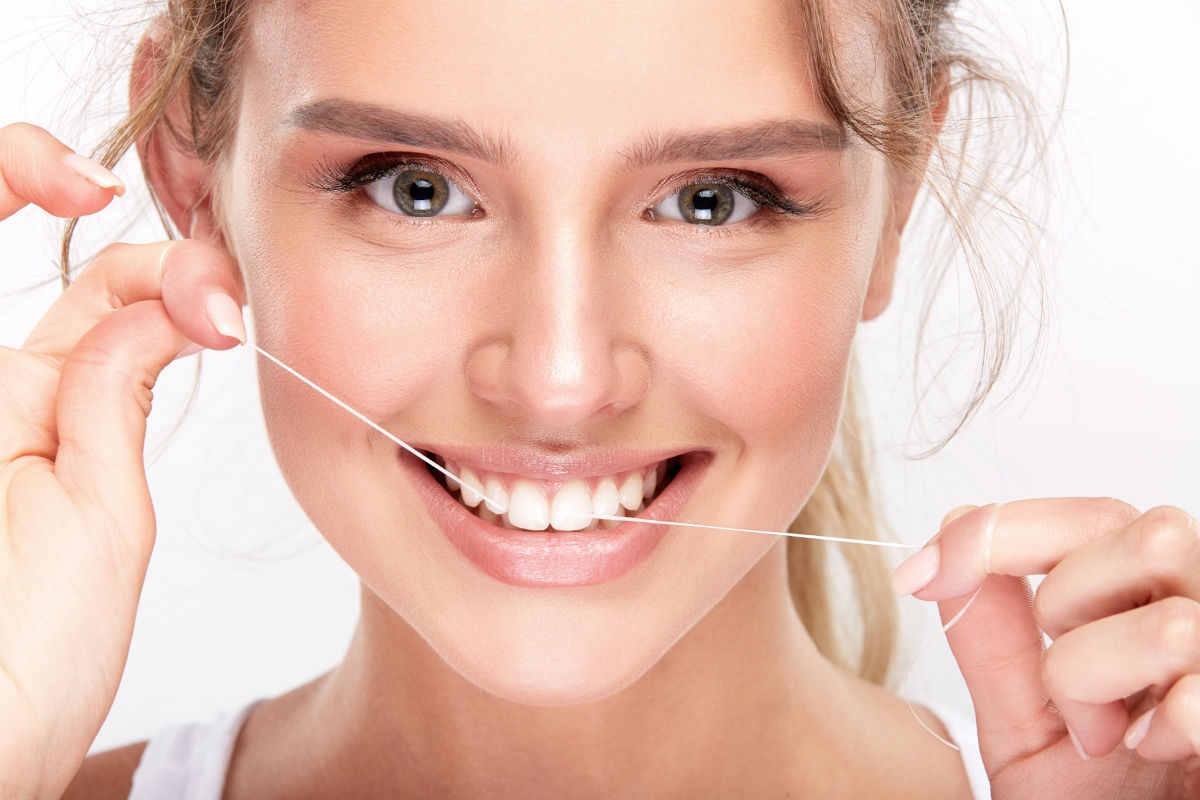Contents

Dental Floss: The Complete Guide for Optimal Use
An essential complement to brushing, dental floss helps remove plaque and food debris lodged in interdental spaces, areas that are hard for a regular toothbrush to reach.
But how do you choose the right dental floss and use it effectively without risking damage to your gums? Discover all our expert tips in this comprehensive guide.
Dental Floss: What Are the Pros and Cons?
Wondering if dental floss is really useful for your oral hygiene? Here’s a rundown of the main pros and cons of this accessory.
The Benefits of Dental Floss
- It effectively supplements brushing by removing interdental plaque, which is responsible for cavities and periodontal diseases.
- It dislodges food residues stuck between teeth.
- Its price is very accessible (a few dollars for several months of use).
- It is well-suited for people with tight interdental spaces.
The Limitations of Dental Floss
- Its use is discouraged for bleeding gums, large gaps between teeth, after invasive dental procedures, or in cases of periodontitis.
- It requires a certain amount of time to be used correctly (it takes an average of 2 to 3 minutes to go around the mouth).
- It can injure the gums if used incorrectly.
- Improper use can push tartar towards the gums and cause infections.
In summary, dental floss is a good addition if you don't have an alternative like a water flosser or interdental brushes. However, dentists rarely recommend it due to the risks for fragile gums. If you opt for this accessory, be sure to follow the instructions carefully to avoid any problems.
How-To: How to Use Dental Floss Correctly
Using dental floss may seem simple, but it actually requires a bit of practice to get the technique right. Here's how to proceed step by step.
- Cut a piece of floss about 18 inches long and wrap most of it around your middle fingers, leaving 1-2 inches free between your thumbs and index fingers.
- Hold the floss taut and gently slide it between each tooth, down to the gumline, using vertical back-and-forth motions.
- When the floss is used, unwind a clean section from your fingers and continue until you have gone around the entire mouth.
- To remove the floss, use the same gentle vertical motion.
- Finish by rinsing with clean water or mouthwash to remove debris.
The key is to be gentle to avoid irritating the gums. If you bleed a little the first few times, don't worry. But if the problem persists, stop using floss and ask your dentist for advice.
There are also dental floss holders, which are small fork-like tools with a taut piece of floss. They are handy if you have trouble handling the floss or for cleaning back teeth.
What Type of Dental Floss Should You Choose?
There are two main categories of dental floss: nylon and PTFE (monofilament).
- Nylon floss, the most common, comes in waxed (for easier passage between teeth) or unwaxed (for optimal cleaning) versions.
- PTFE floss, a bit more expensive, is very thin and strong and glides easily even between tight teeth.
You will also find mint-flavored floss, whitening floss to remove stubborn stains, or ultra-gentle versions for sensitive gums, as well as floss that expands on contact with saliva for a complete clean.
Our Selection of the Best Dental Flosses
Oral-B Glide Pro-Health Deep Clean Floss
We like this high-quality waxed floss, which is easy to use thanks to its smooth and shred-resistant texture. Its mint flavor leaves a pleasant fresh feeling.
Cocofloss
Specially designed to be effective and gentle, this textured floss expands to clean even the tightest spaces. Its coconut oil infusion soothes gums, and it comes in fun, fruity flavors.
Plackers Micro Mint Flossers
This sturdy floss is pre-mounted on an ergonomic handle to facilitate access to back teeth and simplify use. Scented with mint, it leaves a long-lasting clean feeling.
Is Dental Floss Recommended for Children?
The use of dental floss is not contraindicated in children and teens, but it is rarely necessary before the age of 8, as baby teeth are spaced out enough for a brush to pass through.
Floss can be useful as soon as two teeth touch and risk trapping bacteria. But always ask your dentist's advice. Children can start using floss when they have acquired good manual dexterity, around 10-12 years old.
In Conclusion
While not the most important aspect of oral health, dental floss can be a good supplement to your daily brushing. It is effective in reducing plaque and dislodging food debris in hard-to-reach areas.
But for optimal hygiene, we recommend investing in a water flosser or interdental brushes, which are considered safer and more practical than floss by dentists. However, floss can be a handy backup if you don't have these accessories on hand.
FAQ
What is the ideal frequency for using dental floss?
It is advisable to use dental floss once a day, preferably in the evening after brushing.
What are the alternatives to dental floss?
A water flosser is an excellent solution, easy to use and safer for the gums. Interdental brushes are well-suited for people with wide spaces between their teeth.
Can dental floss be dangerous?
Improper use of floss can indeed damage the gums and cause infections. Hence the importance of following the technique correctly and not forcing it. If your gums remain sore, stop using floss and consult your dentist.
